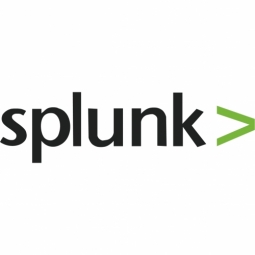Download PDF
Digitizing Emergency Roadside Assistance: Agero's Transformation with Splunk

Technology Category
- Cybersecurity & Privacy - Identity & Authentication Management
- Platform as a Service (PaaS) - Application Development Platforms
Applicable Industries
- Automotive
- Construction & Infrastructure
Applicable Functions
- Sales & Marketing
Use Cases
- Track & Trace of Assets
- Vehicle-to-Infrastructure
Services
- Cloud Planning, Design & Implementation Services
The Challenge
Agero, a market-leading roadside assistance company, was facing the challenge of digitizing its services to improve response times and provide better customer service. The company, which responds to approximately 12 million events annually, provides critical driver support services 24/7. Traditionally, customers accessed its services via telephone, and agents would then dispatch a tow truck or other service provider. However, with the increasing demand for digital services, Agero needed to offer a fully digital, transparent experience to better pinpoint locations, dispatch vehicles, and provide the help customers needed when they were in an accident or stranded on the road. The challenge was to transition from a phone-based service to a 100% digital, agentless experience.
The Customer
Agero
About The Customer
Agero is a market-leading white-label roadside assistance company that works closely with the majority of leading automakers and auto insurers. The company provides critical driver support services 24/7, including roadside assistance, connected vehicle services, and accident scene management. Agero responds to approximately 12 million events annually, supplying these services to many of the new vehicles sold in the United States and through two-thirds of U.S.-based auto insurance carriers, which cover over 100 million consumers. The company has been in business for 50 years and has traditionally provided services via telephone.
The Solution
To address this challenge, Agero implemented Splunk Observability Cloud for better monitoring and observability. This allowed the company to troubleshoot and respond proactively to issues. As Agero started digitizing, the engineering and product teams increasingly relied on the Splunk solution because it gave them a flexible way to use unstructured data in any format. Splunk allowed Agero to decentralize its engineering structure and microservices into one provider, offering a single source of truth for the entirety of the company’s data. Splunk Cloud was also crucial for Agero’s DevOps infrastructure pipeline, offering a flexible platform to monitor and track data across SRE, engineering, product and business teams without any bottleneck issues. Agero’s digitization efforts integrated Agero’s APIs with client APIs, giving the customer a completely agentless experience, while giving Agero comprehensive visibility into their transactions and events.
Operational Impact
Quantitative Benefit
Related Case Studies.

Case Study
IoT System for Tunnel Construction
The Zenitaka Corporation ('Zenitaka') has two major business areas: its architectural business focuses on structures such as government buildings, office buildings, and commercial facilities, while its civil engineering business is targeted at structures such as tunnels, bridges and dams. Within these areas, there presented two issues that have always persisted in regard to the construction of mountain tunnels. These issues are 'improving safety" and "reducing energy consumption". Mountain tunnels construction requires a massive amount of electricity. This is because there are many kinds of electrical equipment being used day and night, including construction machinery, construction lighting, and ventilating fan. Despite this, the amount of power consumption is generally not tightly managed. In many cases, the exact amount of power consumption is only ascertained when the bill from the power company becomes available. Sometimes, corporations install demand-monitoring equipment to help curb the maximum power demanded. However, even in these cases, the devices only allow the total volume of power consumption to be ascertained, or they may issue warnings to prevent the contracted volume of power from being exceeded. In order to tackle the issue of reducing power consumption, it was first necessary to obtain an accurate breakdown of how much power was being used in each particular area. In other words, we needed to be able to visualize the amount of power being consumed. Safety, was also not being managed very rigorously. Even now, tunnel construction sites often use a 'name label' system for managing entry into the work site. Specifically, red labels with white reverse sides that bear the workers' names on both sides are displayed at the tunnel work site entrance. The workers themselves then flip the name label to the appropriate side when entering or exiting from the work site to indicate whether or not they are working inside the tunnel at any given time. If a worker forgets to flip his or her name label when entering or exiting from the tunnel, management cannot be performed effectively. In order to tackle the challenges mentioned above, Zenitaka decided to build a system that could improve the safety of tunnel construction as well as reduce the amount of power consumed. In other words, this new system would facilitate a clear picture of which workers were working in each location at the mountain tunnel construction site, as well as which processes were being carried out at those respective locations at any given time. The system would maintain the safety of all workers while also carefully controlling the electrical equipment to reduce unnecessary power consumption. Having decided on the concept, our next concern was whether there existed any kind of robust hardware that would not break down at the construction work site, that could move freely in response to changes in the working environment, and that could accurately detect workers and vehicles using radio frequency identification (RFID). Given that this system would involve many components that were new to Zenitaka, we decided to enlist the cooperation of E.I.Sol Co., Ltd. ('E.I.Sol') as our joint development partner, as they had provided us with a highly practical proposal.

Case Study
Integral Plant Maintenance
Mercedes-Benz and his partner GAZ chose Siemens to be its maintenance partner at a new engine plant in Yaroslavl, Russia. The new plant offers a capacity to manufacture diesel engines for the Russian market, for locally produced Sprinter Classic. In addition to engines for the local market, the Yaroslavl plant will also produce spare parts. Mercedes-Benz Russia and his partner needed a service partner in order to ensure the operation of these lines in a maintenance partnership arrangement. The challenges included coordinating the entire maintenance management operation, in particular inspections, corrective and predictive maintenance activities, and the optimizing spare parts management. Siemens developed a customized maintenance solution that includes all electronic and mechanical maintenance activities (Integral Plant Maintenance).

Case Study
Splunk Partnership Ties Together Big Data & IoT Services
Splunk was faced with the need to meet emerging customer demands for interfacing IoT projects to its suite of services. The company required an IoT partner that would be able to easily and quickly integrate with its Splunk Enterprise platform, rather than allocating development resources and time to building out an IoT interface and application platform.








